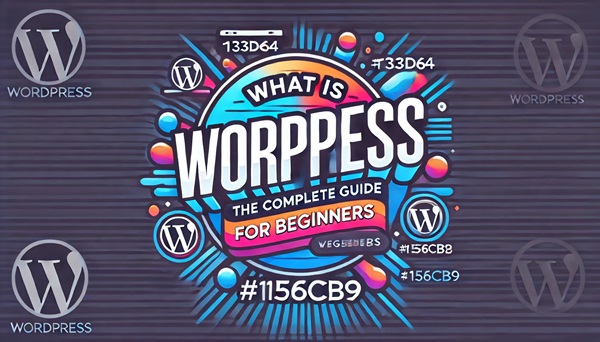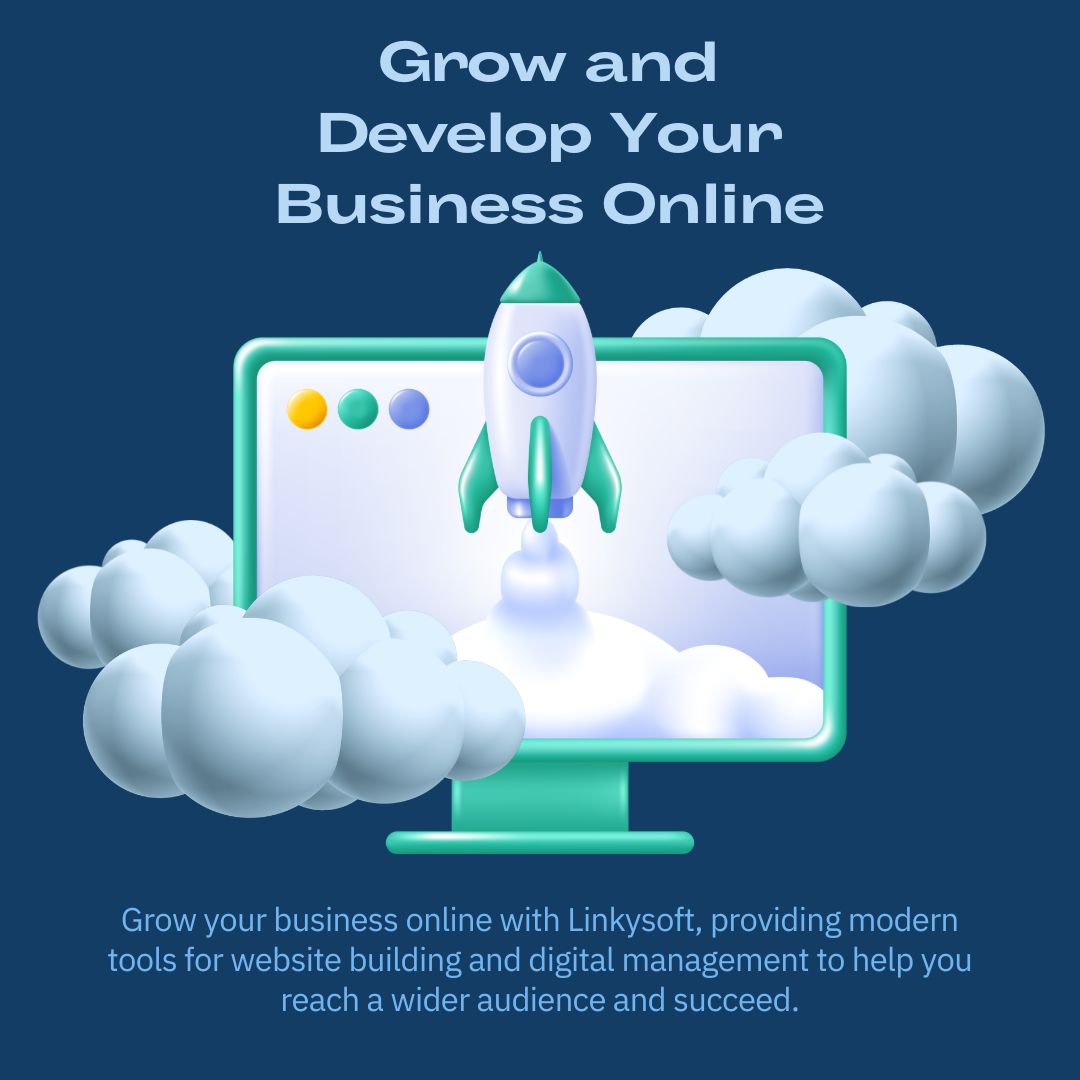WordPress is one of the most popular content management systems in the world, used by millions of websites to create and update content on the internet. WordPress allows you to create blogs, business sites, e-commerce stores, and much more thanks to the variety of available plugins and themes.

What is WordPress?
WordPress is an open-source content management system (CMS) written in
PHP
and based on a
MySQL
database. It was launched in 2003 by Matt Mullenweg and Mike Little, and has since grown to become one of the most popular tools for building websites.
WordPress Features
Ease of Use
WordPress is known for its simple and easy-to-understand user interface, making it the ideal choice for beginners. You can easily add pages, posts, images, and more without needing deep technical knowledge.
Customization
With thousands of free and paid themes and plugins, you can customize your site to fit your specific needs. You can change the design, add new features, and improve performance without touching a single line of code.
Large Community and Support
WordPress has a large community of developers and users who provide continuous support. You can find answers to almost any question in forums, social groups, and specialized blogs.
SEO-Friendly
WordPress is designed to be SEO-friendly, with features like customizable permalinks and plugins that help you optimize your content for search engines.
Getting Started with WordPress
Choosing Hosting and Domain
The first step in creating a WordPress site is choosing a hosting provider and domain for your site. There are many reliable hosting providers like Bluehost, SiteGround, and HostGator. Make sure to choose a hosting plan that supports WordPress.
Steps to Choose Hosting
- Research Hosting Providers: Look for the best hosting providers that support WordPress.
- Read Reviews: Check user reviews and independent tests.
- Choose the Right Plan: Select a plan that fits your site's needs in terms of storage, bandwidth, and technical support.
Installing WordPress
Most hosting providers offer a one-click WordPress installation option. After choosing your hosting, you can easily install WordPress through the control panel.
Installation Steps
- Access the Control Panel: Log in to your hosting provider's control panel.
- Find the WordPress Installation Option: Usually found under software or auto-installers.
- Follow the Instructions: Enter the required information like site name and login details, then click "Install".
Choosing and Installing a Theme
After installing WordPress, you will need to choose a theme for your site. You can browse thousands of available themes in the WordPress library.
Steps to Install a Theme
- Access WordPress Dashboard: Log in to your WordPress dashboard.
- Go to the Themes Section: From the sidebar, select "Appearance" then "Themes".
- Add New Theme: Click "Add New" and search for the theme you want to use.
- Install the Theme: Click "Install" then "Activate".
Installing Essential Plugins
Plugins are small programs that add new features and functions to your WordPress site. There are many useful plugins that beginners should install.
Essential Plugins for Beginners
- Yoast SEO: For search engine optimization.
- Akismet: To protect your site from spam comments.
- Contact Form 7: To create contact forms.
- WooCommerce: To create an online store.
Steps to Install Plugins
- Access WordPress Dashboard: Log in to your WordPress dashboard.
- Go to the Plugins Section: From the sidebar, select "Plugins" then "Add New".
- Search for the Plugin: Type the plugin name in the search bar.
- Install and Activate the Plugin: Click "Install" then "Activate".
Managing Content on WordPress
Creating Pages and Posts
WordPress distinguishes between pages and posts. Pages are static content like "About Us" and "Contact Us", while posts are dynamic content that appears in your blog.
Steps to Create a New Page
- Access WordPress Dashboard: Log in to your WordPress dashboard.
- Go to the Pages Section: From the sidebar, select "Pages" then "Add New".
- Add Content: Enter the page title and content.
- Publish the Page: Click "Publish" to make the page live.
Steps to Create a New Post
- Access WordPress Dashboard: Log in to your WordPress dashboard.
- Go to the Posts Section: From the sidebar, select "Posts" then "Add New".
- Add Content: Enter the post title and content.
- Publish the Post: Click "Publish" to make the post live.
Managing Media
WordPress provides a media library to manage images, videos, and other files used on your site.
Steps to Upload and Manage Media
- Access Media Library: From the sidebar, select "Media" then "Library".
- Upload a New File: Click "Add New" and choose the file from your computer.
- Edit Media: You can edit file details like title, alt text, and description.
Improving Your WordPress Site
Improving Speed
Site speed is an important factor affecting user experience and your site's ranking in search engines.
Tips to Improve Site Speed
- Use Good Hosting: Ensure you choose a hosting provider that offers high speed and performance.
- Reduce Image Sizes: Use image compression tools to reduce file size without losing quality.
- Use Caching Plugins: Like W3 Total Cache or WP Super Cache to improve page load times.
- Reduce Plugins: Do not install too many plugins, only keep the ones you really need.
Improving Security
Securing your site is crucial to protect your data and your users' data.
Tips to Improve Site Security
- Use Strong Passwords: Ensure you use complex and hard-to-guess passwords.
- Update WordPress and Plugins: Regularly update WordPress, plugins, and themes.
- Use Security Plugins: Like Wordfence or Sucuri to enhance your site's security.
- Enable Two-Factor Authentication: Add an extra layer of protection.
Online Marketing with WordPress
Search Engine Optimization (SEO)
SEO is the process of optimizing your site to increase its visibility in organic search results.
Tips for SEO
- Use SEO Plugins: Like Yoast SEO to optimize your site content for search engines.
- Create High-Quality Content: Ensure you write useful and engaging content that meets readers' needs.
- Use Good Permalinks: Choose a permalink structure that is SEO-friendly.
- Optimize Images: Use alt text and titles to improve image visibility in search engines.
Email Marketing
Email marketing is an effective way to communicate with your audience and increase loyalty.
Tips for Email Marketing
- Collect Email Addresses: Use sign-up forms on your site to collect email addresses.
- Send Valuable Content: Ensure you send useful and engaging content that adds value to subscribers.
- Use Email Marketing Plugins: Like Mailchimp or Constant Contact to manage email campaigns.
Resources and References
Reference Sites
Useful Books
- "WordPress for Dummies" by Lisa Sabin-Wilson
- "Professional WordPress: Design and Development" by Brad Williams
Communities and Forums
Conclusion
WordPress is a powerful and flexible tool for building and managing websites. Whether you are a beginner or a professional, you can take advantage of the many features it offers to create a great site that meets your needs and goals. Start today and take advantage of the vast possibilities that WordPress offers.








